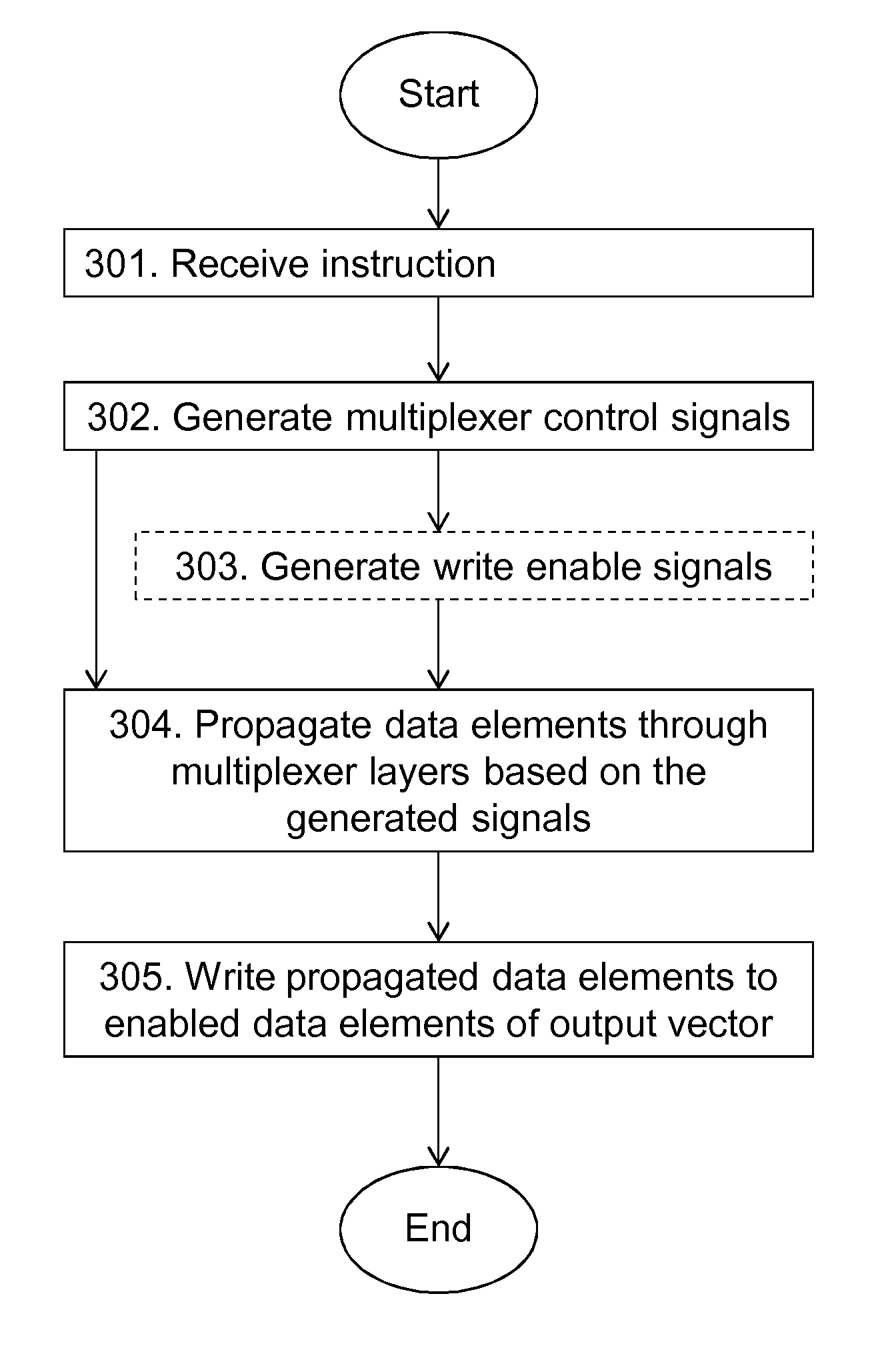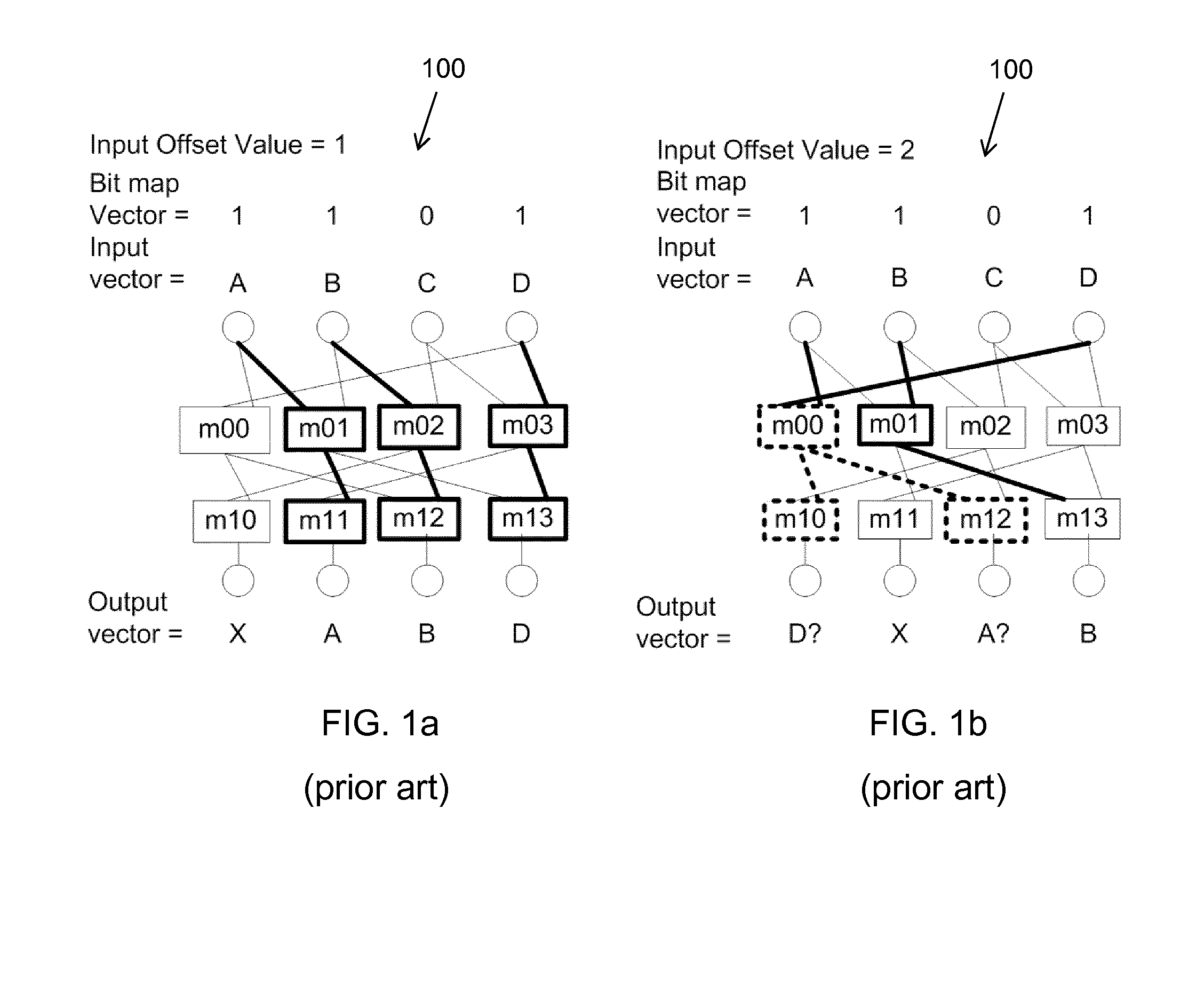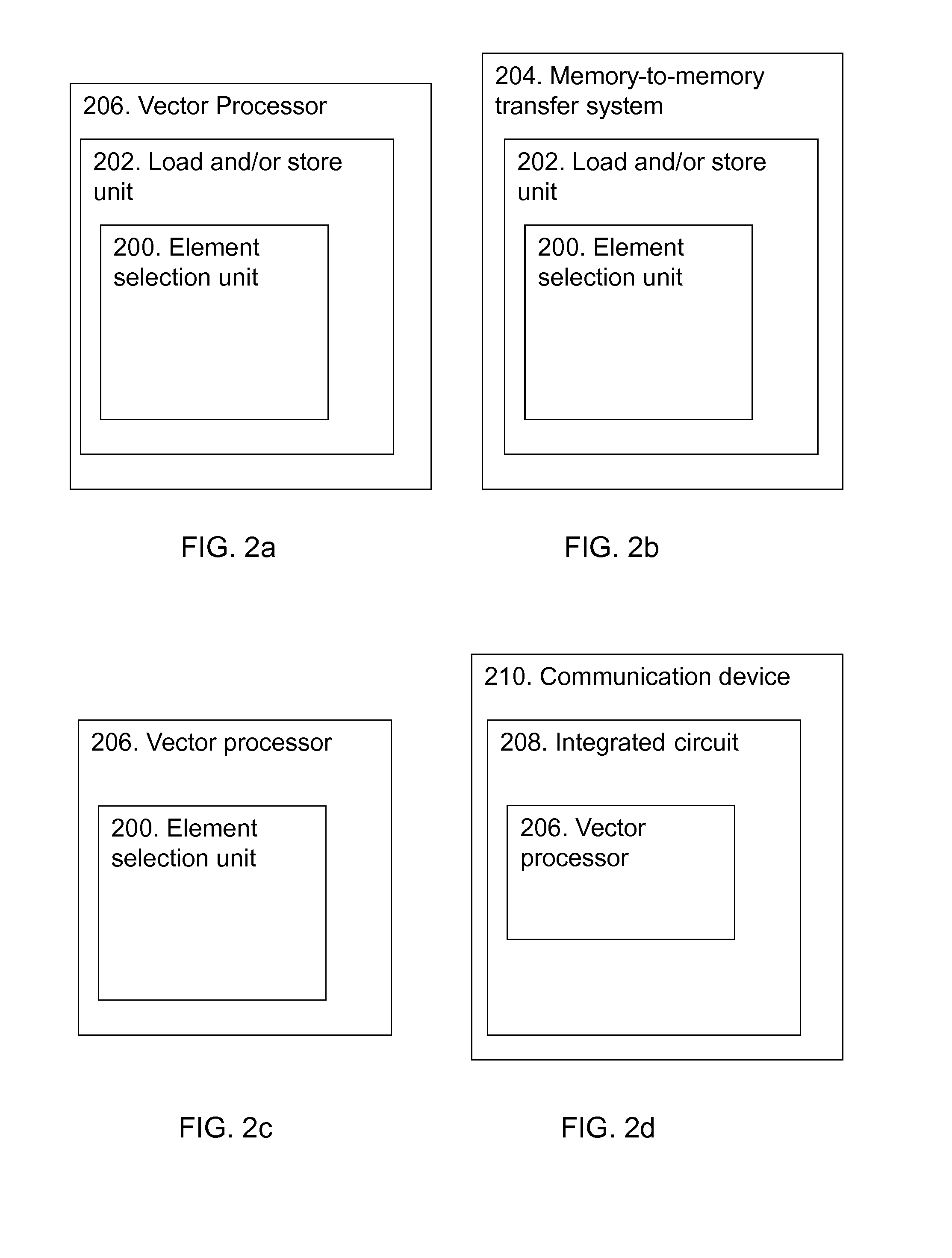Element Selection Unit and a Method Therein
a technology of element selection and selection unit, applied in the direction of transmission path division, amplitude demodulation, instruments, etc., can solve the problems of increasing the overhead of controlling and configuring data transport, increasing the complexity of signal processing software, and increasing the complexity of signal processing structure, so as to improve the performance of a data processing system
- Summary
- Abstract
- Description
- Claims
- Application Information
AI Technical Summary
Benefits of technology
Problems solved by technology
Method used
Image
Examples
Embodiment Construction
[0044]Embodiments will be exemplified in the following non-limiting description.
[0045]Embodiments herein relate to a high-throughput low-cost element selection unit. The element selection unit is capable of selecting data elements from an input vector, concatenating the selected data elements, giving the selected set of data elements a common rotation and merging the selected set of data elements with an output vector.
[0046]The selection of data elements from the input vector is based on a selection bit map, i.e. a vector of Boolean values.
[0047]Each data element corresponds to a word, i.e. a fixed size of W′ bits, which is handled as a unit. The word size may for example be equal to 8, 16, or 32 bits.
[0048]The element selection unit comprises (2 log(P)+1) layers with P−1 two-input multiplexers of W bits width, which multiplexers are individually controlled, cf. FIG. 6 which will be described in more detail below. P is the number of data elements in the input vector, and may be equa...
PUM
 Login to View More
Login to View More Abstract
Description
Claims
Application Information
 Login to View More
Login to View More - R&D
- Intellectual Property
- Life Sciences
- Materials
- Tech Scout
- Unparalleled Data Quality
- Higher Quality Content
- 60% Fewer Hallucinations
Browse by: Latest US Patents, China's latest patents, Technical Efficacy Thesaurus, Application Domain, Technology Topic, Popular Technical Reports.
© 2025 PatSnap. All rights reserved.Legal|Privacy policy|Modern Slavery Act Transparency Statement|Sitemap|About US| Contact US: help@patsnap.com



